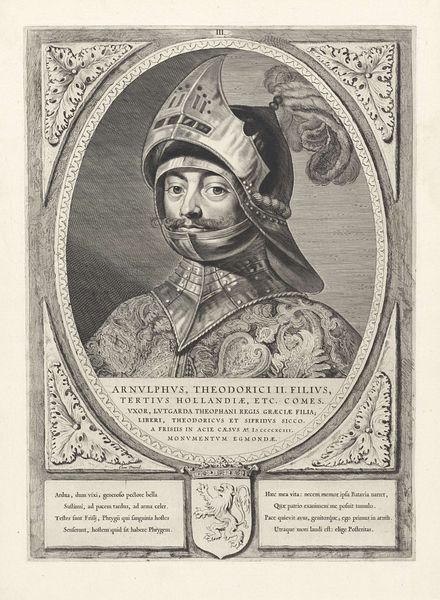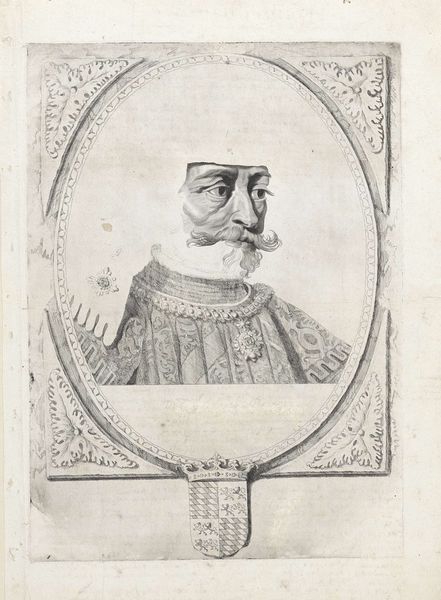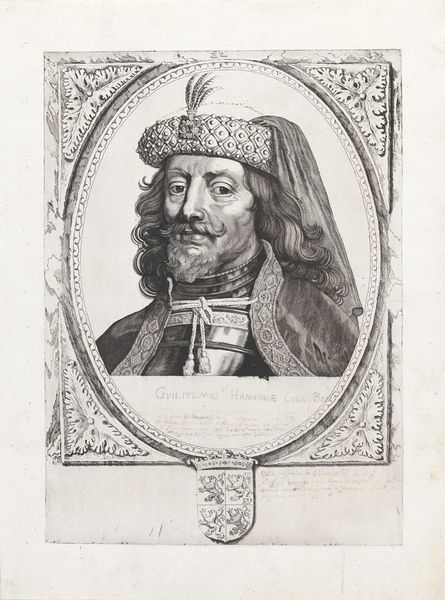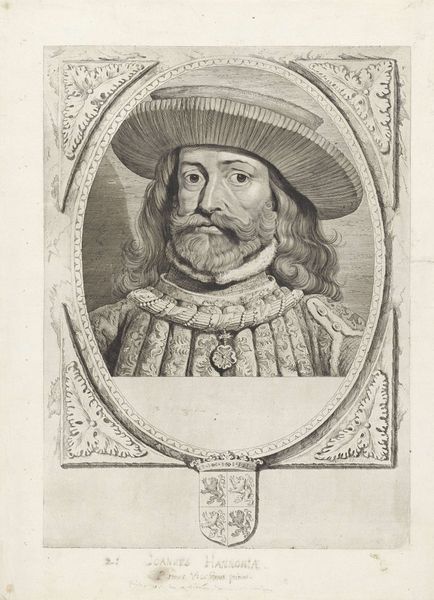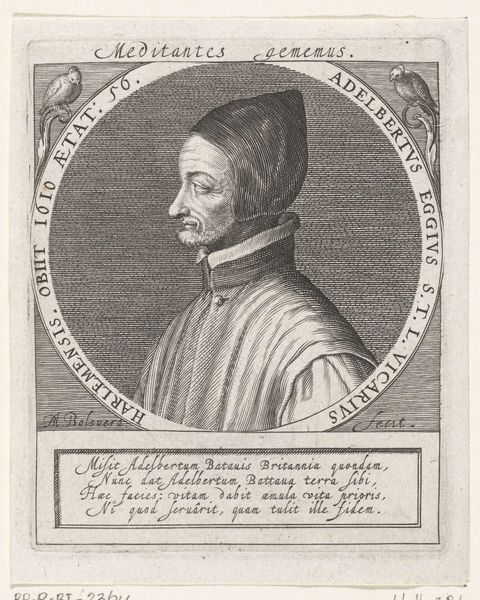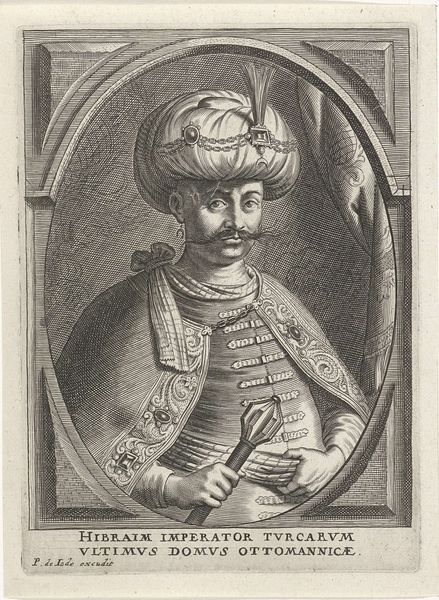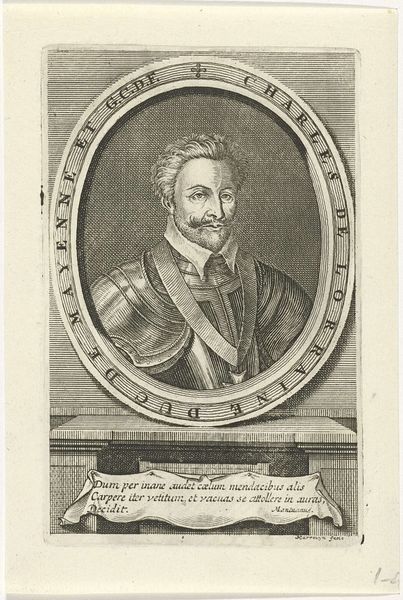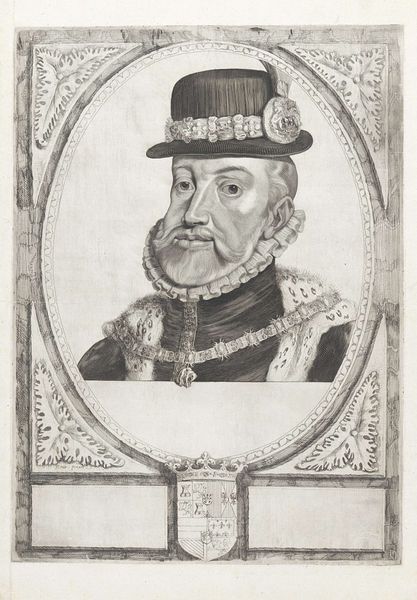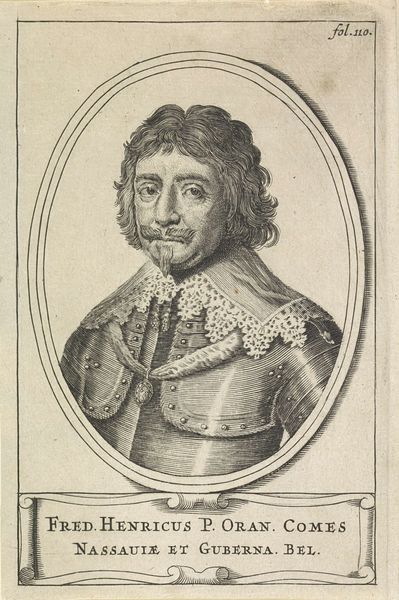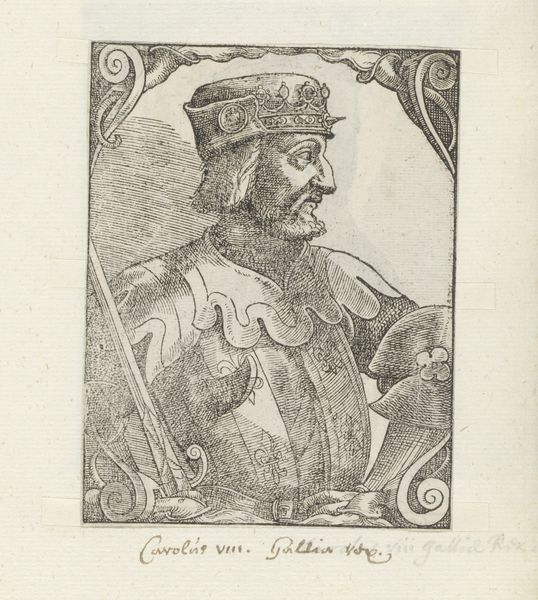
#
pencil drawn
#
toned paper
#
light pencil work
#
pencil sketch
#
old engraving style
#
personal sketchbook
#
pencil drawing
#
sketchbook drawing
#
pencil work
#
sketchbook art
Dimensions: height 405 mm, width 296 mm
Copyright: Rijks Museum: Open Domain
Curator: This delicate drawing is Cornelis Visscher's "Portrait of Arnulf, Count of Holland," dating back to 1650. It’s currently held in the Rijksmuseum. It’s a pencil drawing on toned paper. What strikes you initially about this image? Editor: I'm struck by a curious sort of vulnerability amidst all that armor. He looks both protected and profoundly exposed. Like he's staring directly at his own mortality. The pencil sketch style heightens that effect, making him appear somehow less solid, more ethereal. Curator: Absolutely. The armor and elaborate frame, embellished with foliate ornament, are designed to project power and lineage – he’s practically entombed in the symbols of his authority. Yet Visscher's rendering is quite intimate. Note the gentle modelling of the face. There's a sense of thoughtful melancholy about his eyes. Editor: The helmet’s plume reminds me a little of death's wings, and also to a medieval court jester. It undercuts the intended martial presentation. Then there is that ornate framing - it resembles an ostentatious tomb, further hinting that mortality triumphs over temporal status. Even the lion in the coat of arms at the bottom of the frame seems tired and docile. It also contrasts strongly with the lightness of the sketch itself, emphasizing the ephemeral nature of power, even as he is meant to represent the noble bloodlines. Curator: That's a perceptive reading. Consider also the lack of a surrounding background. It concentrates the gaze directly upon the Count and his armor, leaving negative space surrounding him, underscoring a possible psychological isolation. Editor: Indeed. And though it is difficult to see on a first approach, Visscher left sketch lines around the ornate border – an interesting touch! It gives the impression that even his legacy might someday be unfinished business. I suppose there’s a touch of irony as the noble image comes across as profoundly human through that lack of complete artifice. Curator: It is an interesting dance, indeed! For me, the artwork beautifully represents the subtle negotiations between historical persona and lived experience that any leader faces through generations. Editor: Yes! It reminds me of how artists capture a fragile dance that happens between reality and a posed character. An invitation into how both art and power continue to invite reinterpretations through changing ages.
Comments
No comments
Be the first to comment and join the conversation on the ultimate creative platform.
